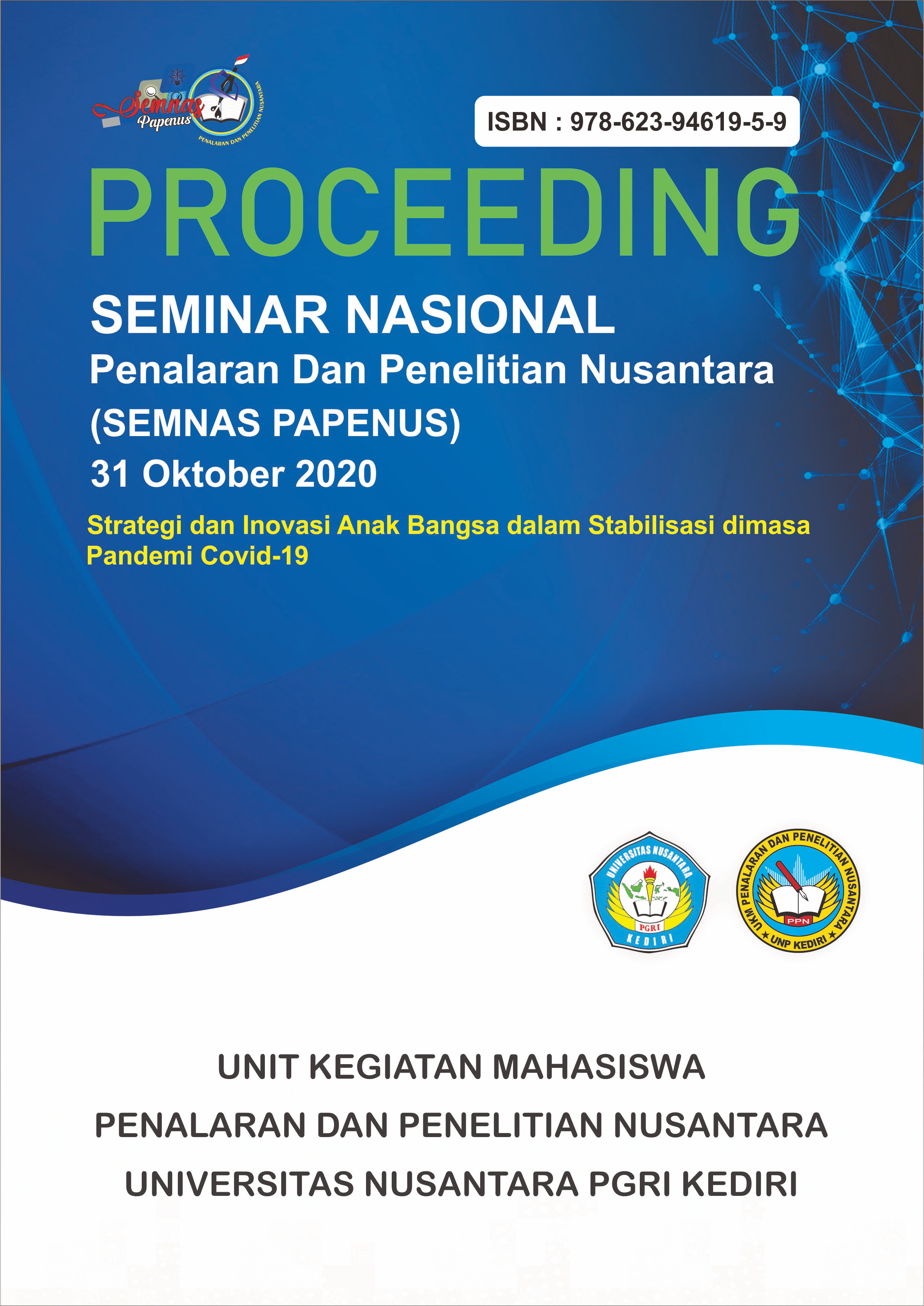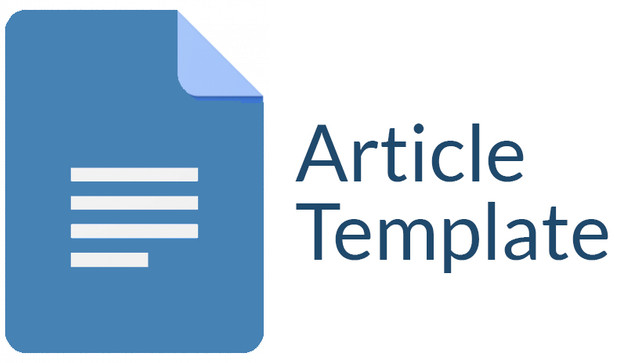Komunikasi dan Edukasi Publik Model komunikasi untuk edukasi publik pada masa pandemi covid-19 di kebun raya bali
(Studi Kasus Implementasi Protokol Adaptasi Kebiasaan Baru Bagi Pengunjung Pasca Reopening Kebun Raya Bali)
Keywords:
model kontekstual, edukasi publik, kebun raya baliAbstract
ABSTRAK
Kebun Raya Eka Karya Bali adalah salah satu kebun raya yang berada di bawah pengelolaan Lembaga Ilmu Pengetahuan Indonesia (LIPI) pernah ditutup untuk kunjungan umum dari bulan Maret-Juli 2020. Ini dilakukan untuk mengantisipasi penyebaran virus Covid-19. Hingga dibuka kembali pada 22 Juli 2020 lalu. Tantangan yang dihadapi pengelola pada masa reopening Kebun Raya Bali adalah mengomunikasikan pentingnya adaptasi kebiasaan baru bagi pengunjung dan menjaga agar Kebun Raya Bali tidak menjadi cluster baru penyebaran pandemi. Karenanya, penelitian ini bertujuan untuk mengidentifikasi model komunikasi yang digunakan oleh pengelola dalam melakukan edukasi publik terkait penerapan adaptasi kebiasaan baru di tempat wisata tersebut. Peneliti menggunakan metode studi kasus deskriptif dalam mengelaborasi fenomena ini. Hasil penelitian menunjukkan bahwa pengelola mengadopsi model kontekstual untuk mengomunikasikan pesan adaptasi kebiasaan baru bagi pengunjung melalui himbauan lisan oleh petugas pelayanan dan menggunakan media informasi online maupun offline. Kesimpulannya adalah implementasi model komunikasi kontekstual ini memiliki kelebihan yaitu dapat digunakan untuk menyampaikan informasi berdasarkan konteks tertentu, termasuk pesan menjaga kesehatan di masa pandemi; relevan diaplikasikan untuk bidang komunikasi kesehatan. Di sisi lain, model komunikasi ini memiliki kelemahan bahwa kepatuhan pengunjung untuk mengimplementasikan protokol kesehatan selama berada di Kebun Raya Bali tergantung aspek psikologis pribadi dan relasi sosialnya.
Kata Kunci: model kontekstual, edukasi publik, kebun raya bali
ABSTRACT
Bali Botanic Garden is one of the botanical gardens managed by the Indonesian Institute of Sciences (LIPI). It was closed for public from March-July 2020. This is to anticipate the spread of the Covid-19 virus. Until it reopened on 22nd of July, 2020. The organizer face challenges during the reopening of the Bali Botanic Gardens to communicate the importance of new normal habits for visitors, to keep the Bali Botanical Gardens from becoming a new cluster of the pandemic. Therefore, this study aims to identify the communication model used by organizer to educate the public regarding new normal adaptations at this destination. Researchers used descriptive case study methods to elaborate the phenomenon. The results showed that the implementation of a contextual model to communicate new adaptation messages for visitors are conveyed through verbal appeals by the officers and using online and offline information media. The conclusion is the implementation of this model has the advantage that it can be used to convey information based on a certain context, including messages to maintain health during a pandemic; relevant to the health communication field. On the other hand, this model has the weakness that the visitor’s compliance to implement health protocols while in Bali Botanical Gardens depends on their personal psychological aspects and social relationships.
Keywords: contextual model, public education, bali botanic garden
References
Pustaka Primer (Jurnal):
Biemnowiez, C., Harrison, G., & Crandall, W. R. (2011). The New Normal: How Social Media is Changing the Way Organizations Manage a Crisis. Central Business Review, Vol. XXX, No. 1-2, p. 17-24.
Kasperson, R. E., Renn, O., Slovic, P., Brown, H. S., Emel, J., Goble, R., Kasperson, J. X., & Ratick, S. (1988). The Social Amplification of Risk: A Conceptual Framework. Risk Analysis, Vol. 8, No. 2, p. 177-187, https://doi.org/10.1111/j.1539-6924.1988.tb01168.x.
Lewenstein, B. V. (2003). Model of Public Communication of Science and Technology. Journal of Geoscience Education, 16 June, p. 1-11.
Mheidly, N., & Fares, J. (2020). Leveraging Media and Health Communication Strategies to Overcome the COVID‑19 Infodemic. Journal of Public Health Policy, published online August 21, https://doi.org/10.1057/s41271-020-00247-w.
Oginni, O. S. (2015). Social Media and Public Policy Process in Africa: Enhanced Policy Process in Digital Age. The Journal of Sustainable Development, Vol. 14 No. 2, p. 158-172.
Reddy B.V., & Gupta, A. (2020). Importance of Effective Communication During COVID-19 Infodemic. Journal of Family Medicine and Primary Care, 9:3793-6.
Sampurno, M. B., Kusumandyoko, T. C., & Islam, M. A. (2020). Budaya Media Sosial, Edukasi Masyarakat dan Pandemi Covid-19. Jurnal Sosial & Budaya Syar’i, Vol. 7, No. 6, pp. 529-542. DOI: 10.15408/sjsbs.v7i5.15210.
Vraga, E. K., & Jacobsen, H. (2020). Strategies for Effective Health Communication during the Coronavirus Pandemic and Future Emerging Infectious Disease Events. World Medical and Health Policy, DOI: 10.1002/wmh3.359.
Wang, H., Cleary, P. D., Little, J., & Auffray, C. (2020). Communicating in a Public Health Crisis. Lancet Public Health, published online Aug 10. https://doi.org/10.1016/S2468-2667(20)30187-0.
Buku Teks:
Atkin, C & Wallack, L. (1990). Mass Communication and Public Health: Complexities and Conflicts. California: Sage.
Irwin, A., & Wynne, B. (1996). Misunderstanding Science? The Public Reconstruction of Science and Technology. Cambridge: Cambridge University Press.
Kreps, G. L. & Thornton, B. C. (1992). Health Communication: Theory & Practice. 2nd ed. Prospect Heights, Ill.: Waveland Press. x, 233.
Miles, M. B., & Huberman, A. M. (2014). Analisis Data Kualitatif. Edisi Pertama. Jakarta: Penerbit Universitas Indonesia (UI-Press).
Sclove, R. (1995). Democracy and Technology. New York: Guilford.
Wynne, B. (1995). Public Understanding of Science, in Handbook of Science and Technology Studies, S. Jasanoff, et al., Editors, p. 361-388. California: Sage.
Ziman, J. (1992). Not Knowing, Needing to Know, and Wanting to Know, in When Science Meets the Public, B.V. Lewenstein, Editor, p. 13-20. Washington: American Association for the Advancement of Science.
Artikel Online:
Baliprov.go.id. (2020, 2 Oktober). Data Sebaran Kasus Covid-19 Bali. Diakses melalui: <https://pendataan.baliprov.go.id/> pada 2 Oktober 2020.
Cnnindonesia.com. (2020, 24 Maret). Pariwisata Bali Rugi Rp. 138 T Karena Corona. Dikses melalui: <https://www.cnnindonesia.com/ekonomi/20200424184540-92-497101/pariwisata-bali-rugi-rp138-t-karena-corona> pada 30 September 2020.
Goodnewfromindonesia.id. (2020). Pengguna Instagram di Indonesia Didominasi Wanita dan Generasi Milenial. Diakses dari: https://www.goodnewsfromindonesia.id/2020/06/14/pengguna-instagram-di-indonesia-didominasi-wanita-dan-generasi-milenial, pada 20 September 2020.
LIPI. (2020, 18 Maret). Penutupan Sementara Kebun Raya LIPI. Diakses melalui: <http://lipi.go.id/berita/penutupan-sementara-kebun-raya-lipi/21976> pada 3 Oktober 2020.

Downloads
Published
Issue
Section
License
Copyright (c) 2021 Muntadliroh

This work is licensed under a Creative Commons Attribution-ShareAlike 4.0 International License.





